Here is a million-dollar baby. Maybe.
This is the picture: Male, five-eleven, the muscular physique of “Mr. America” and brooding, dark good looks reminiscent of the late James Dean.
Talents: Acting and singing.
Personality: Partly cloudy, with occasional thunder.
Name: Rod Lauren.
And maybe he will be the biggest star of the coming decade.
– “Birth of a Star” by Martin Cohen
TV-Radio Mirror, October 1960
On the day he was born – on March 26, 1940, in Fresno – his parents named him Roger Lawrence Strunk.1Confusingly, Roger’s “official” entry in the Fresno County birth records for 1939 clearly shows his name on arrival as Rogers Laurence Strunk, and his father as Laurence Jess Strunk, both of which appear to be errors. To add to the confusion, Roger’s name in the 1940 federal census appears to have been reported as Rodgers T. Strunk. By the time he turned twenty, he would be heard on radio stations across the United States (as well as in Canada, Great Britain and several other countries), written about in newspapers and magazines – from his hometown Tracy Press to Life, Time, and Parade – and seen on national television with Ed Sullivan, Bob Hope, Perry Como, Steve Allen and on Dick Clark’s “American Bandstand,” known now as “moody, sullen-faced” Rod Lauren.
This is the story of Rod Lauren, and of Roger Strunk.
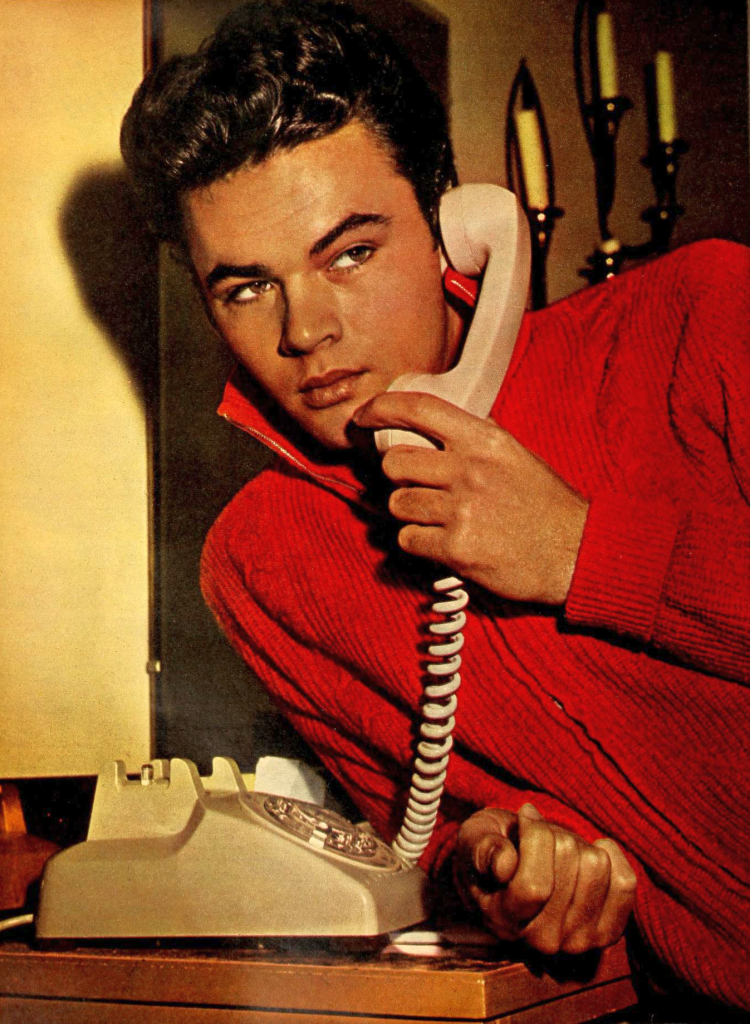
Rod Lauren, from a feature article in the October 1960 edition of TV-Radio Mirror.
By the time Roger Strunk turned thirty, the life that had been planned for him as Rod Lauren had begun to fade. He had recorded a few dozen songs on two labels, including RCA Victor, which had discovered him in 1959 and aimed him toward stardom – hoping he might fill the void left by his RCA stablemate, Elvis Presley, who was off in Germany and away from the recording studio while serving his two-year hitch in Uncle Sam’s Army.
Roger – or, rather, Rod Lauren – wasn’t chosen to replace Elvis as an imitator. While Elvis could growl or croon, sing it loud and rough or soft and sweet, Rod hewed closer to Johnny Mathis in style, with a smooth, melodic vocal range that worked best on soft, romantic tunes or light, poppy numbers.
But Rod – or, rather, Roger Strunk – didn’t start out with the goal of being a pop singer. Sure, he had a wonderful voice and he certainly knew how to sing (because simply having a good voice doesn’t necessarily make you a good singer), played the trombone in the school jazz band (his mom was an accomplished music teacher), and he was also a varsity baseball player in high school, where he worked reliably as a relief pitcher out of the bullpen in addition to handling the bat quite well when called on to take a few swings at the plate.
Roger’s parents had wanted him to become a dentist.
Roger wanted to be an actor.
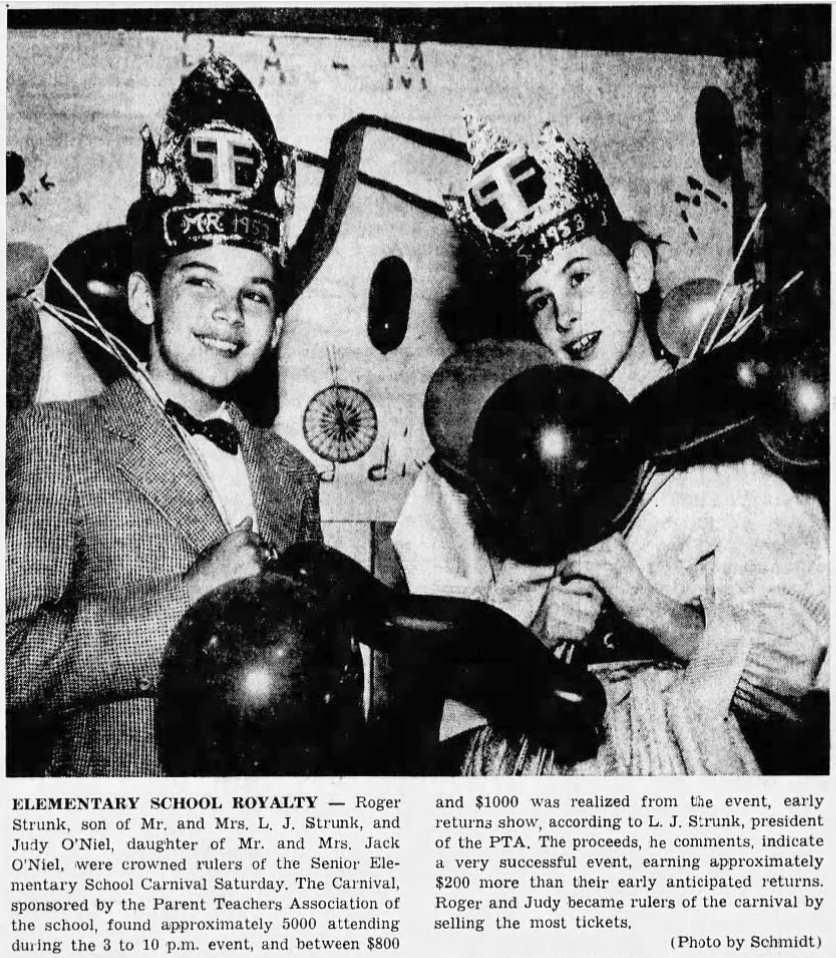
12-year-old Roger Strunk is crowned “King” at Senior Elementary School in February 1953. (Tracy Press photo)
![]()
In 1942, when Roger was about two years old, his parents relocated their little family from Fresno to little Tracy, Calif., on the west side of the San Joaquin Valley, just over the Altamont Pass from the San Francisco Bay Area.
Tracy (population just over 4,000 in 1940) was a pocket-sized version of Fresno (population just over 60,000 in 1940) – a town built around a busy railroad junction, surrounded by small, comfortable homes built primarily for the railroad’s workers, and surrounded by dairy farms and fields of alfalfa, tomatoes, beans, and other seasonal crops that grew well in the rich soil and could be shipped quickly by rail to points east.
Roger’s dad, Larry, was a switchman for the Southern Pacific Railroad, whose bustling Tracy yard was located on the edge of the city’s bustling downtown. Transferring from Fresno to Tracy, Larry worked for the SP for three years before becoming a teacher at West Park School in his new hometown.

The three-member Strunk family, residents of R Street in Fresno, listed in the 1940 United States Census. It looks very much as though the census taker has entered one-year-old Roger’s name as “Strunk, Rodgers T.” – although his mother was the person providing the information. Roger’s dad’s occupation at the time is noted as beverage salesman.
Meanwhile Mrs. Strunk – Helen – kept the family home running while keeping an eye on Roger and his new little sisters, Sharolyn (born in 1942, who would be known as Sharry) and Tamara (born in 1943, who would be known as Tammy).
The family of five settled into a small, comfortable home on Whittier Avenue in the Parker Acres tract, one of the city’s first residential districts. In 1948, Larry gave up teaching and returned to his work as a switchman with the Southern Pacific, a good, well-paying job that came with a full menu of union benefits.
Once Roger, Sharry and Tammy were attending school on a daily basis, Mrs. Strunk also headed back to the classroom, first at several schools as a substitute teacher, followed by a year at West Park and two years at the old Naglee School, located north of town near Old River. In 1955, Mrs. Strunk moved to the Jefferson School in Tracy’s Carbona district, beginning a long career teaching music and third grade. (She retired in 1974.)
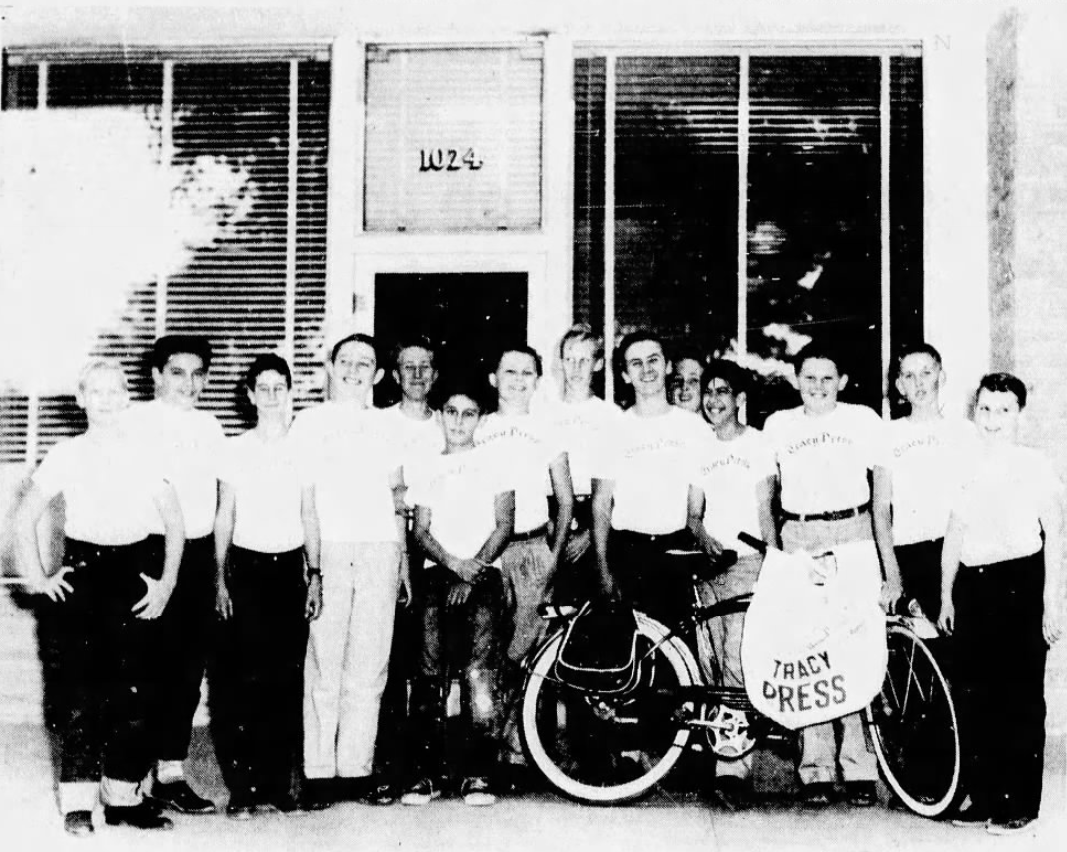
At age thirteen, Roger Strunk (second from left) was one of fourteen local lads that delivered the Tracy Press to subscribers in their neighborhoods. The boys – most of them in Tracy Press T-shirts and dungarees with rolled-up cuffs – gathered for this team photo outside the Press office in October 1953.
Among Mrs. Strunk’s earliest students were her own three children, each of whom was musically inclined. The Strunk kids were popular and very much involved in their community, as were their parents; dad and mom were involved in various local organizations, including the PTA and their church, where Mrs. Strunk was the organist and Mr. Strunk added his voice to the choir.
As a kid, Roger played Little League baseball and “lightweight” flag football, won the schoolboy free-throw shooting championship in 1953 (hitting 19 of his 25 shots) and had a paper route, delivering the Tracy Press in his neighborhood. All three Strunk siblings attended Senior Elementary School (a “middle school” or “junior high,” easing the transition from grade school to the next level) and what was the city’s lone secondary school at the time, Tracy Union High School – and each did quite well academically and socially, taking part in numerous extracurricular activities, including sports, music and theater – three good-looking kids with easy, winning smiles and outgoing personalities.
![]()
Often, the twice-weekly Tracy Press that Roger Strunk tossed on local driveways (with the skilled arm of an up-and-coming prep hurler) carried his name within its pages – a front-page photo in February 1952 shows him beaming from under a jaunty crown, dapper in bow tie and checked sports coat, having been declared king of Senior Elementary’s fundraising carnival (alongside his queen-for-a-day classmate, Judy O’Niel) for having sold the most tickets to the event.
“King” may or may not have been a step up from his being elected as president of the 7/5 class at Senior Elementary, as reported earlier that school year. (The Tracy Press, in its news item announcing the election results, also noted that Rebecca Reymundo was voted in to serve as “gum monitor.”)
Roger shares billing with his sister Sharolyn in the Press’ “In Tracy Society” column in December 1954 – she plays flute as part of the ensemble performing the Nutcracker Suite, and Roger models the latest in clothing style for boys from the downtown J.C. Penney’s store as part of the “Tots To Teens Fashion Show,” all part of a gala fundraiser for Senior Elementary that is held in Tracy High’s auditorium.

Roger Strunk (far right) playing trombone with the Tracy High School Jazz Band in 1956. The other band members are (left to right) Richard Blackard, drums; Haynes McClellan, bass; Lynn Felber, trumpet; and George Gray, saxophone.
Once ensconced at Tracy High, Roger’s name pops up in the Tracy Press with almost clocklike regularity, as a capable pitcher and batter for the Bulldogs’ baseball squad, playing trombone in his alma mater’s orchestra and jazz band, as an actor appearing in a variety of school plays.
Clearly comfortable in front of an audience, he shines in the role of boisterous Uncle Teddy Brewster (who believes he’s actually the Teddy Roosevelt) in the school’s production of the black comedy “Arsenic and Old Lace.” If his time treading the boards in the limelight on Tracy High’s stage hasn’t set him firmly on the path toward a career in TV and movies, nothing ever will.
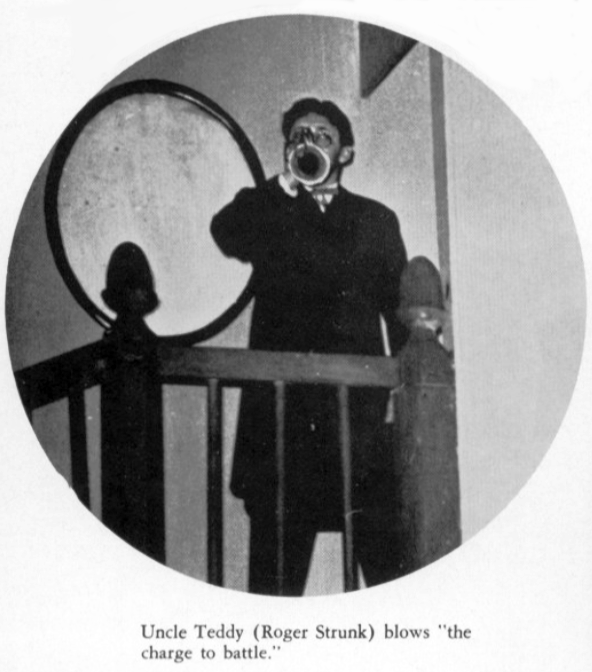
Roger Strunk on stage during Tracy High’s production of “Arsenic and Old Lace” during the 1956-57 school year.
He earned his “Block T,” signifying a varsity Tracy High student-athlete, lettering as a junior during the 1955-56 school year with the Bulldogs baseball team. During that fall’s football season, however, he was only a Bullpup, playing on the “Bee” (junior varsity) gridiron squad. Nonetheless, his name, image and likeness appear a dozen times in that year’s El Portal yearbook for his involvement in nearly every aspect of campus life.
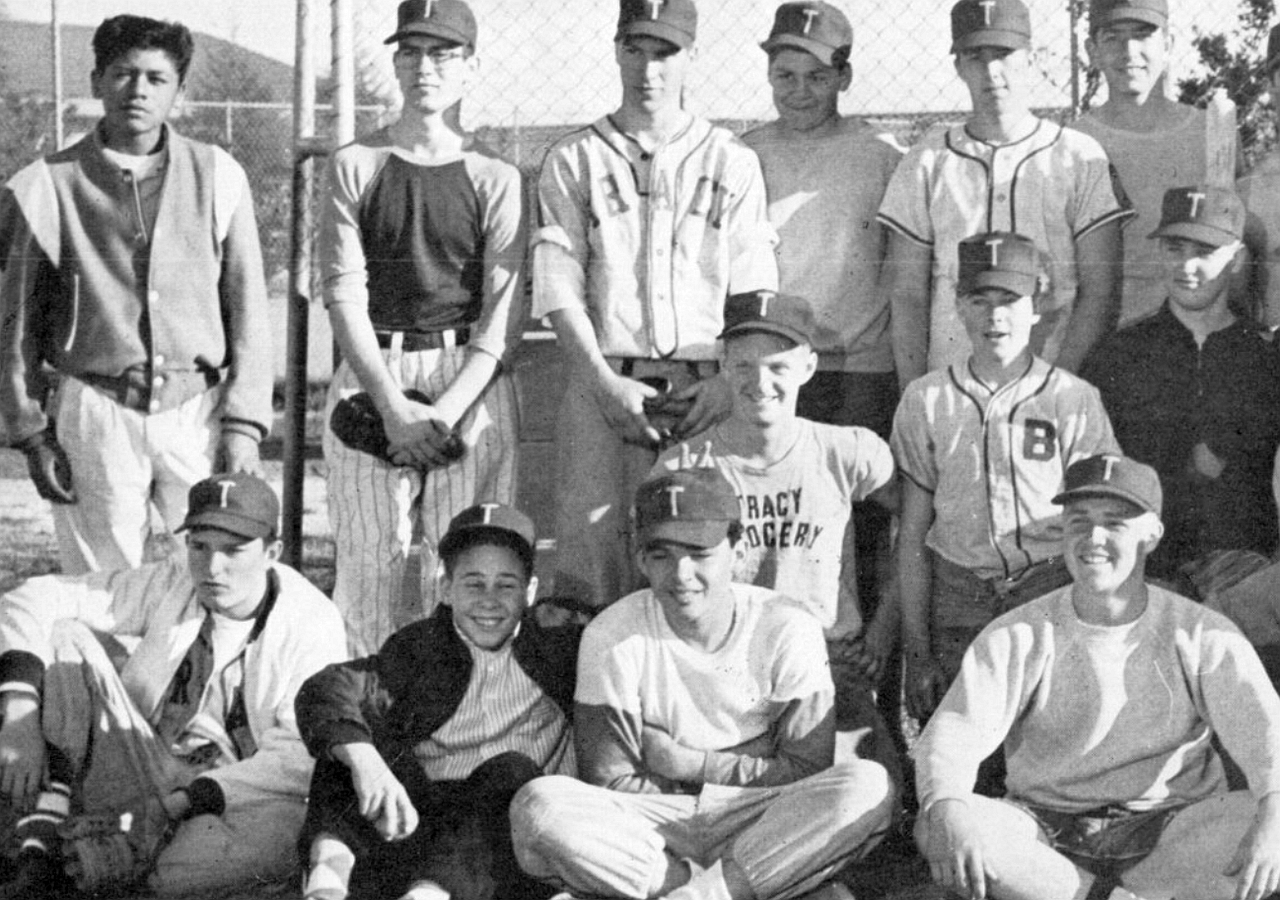
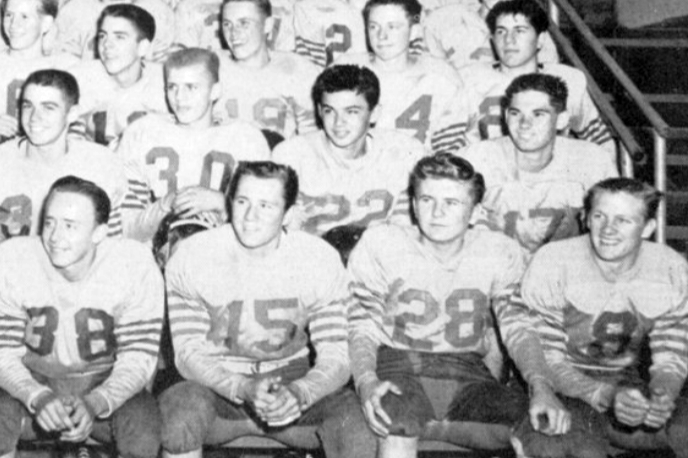
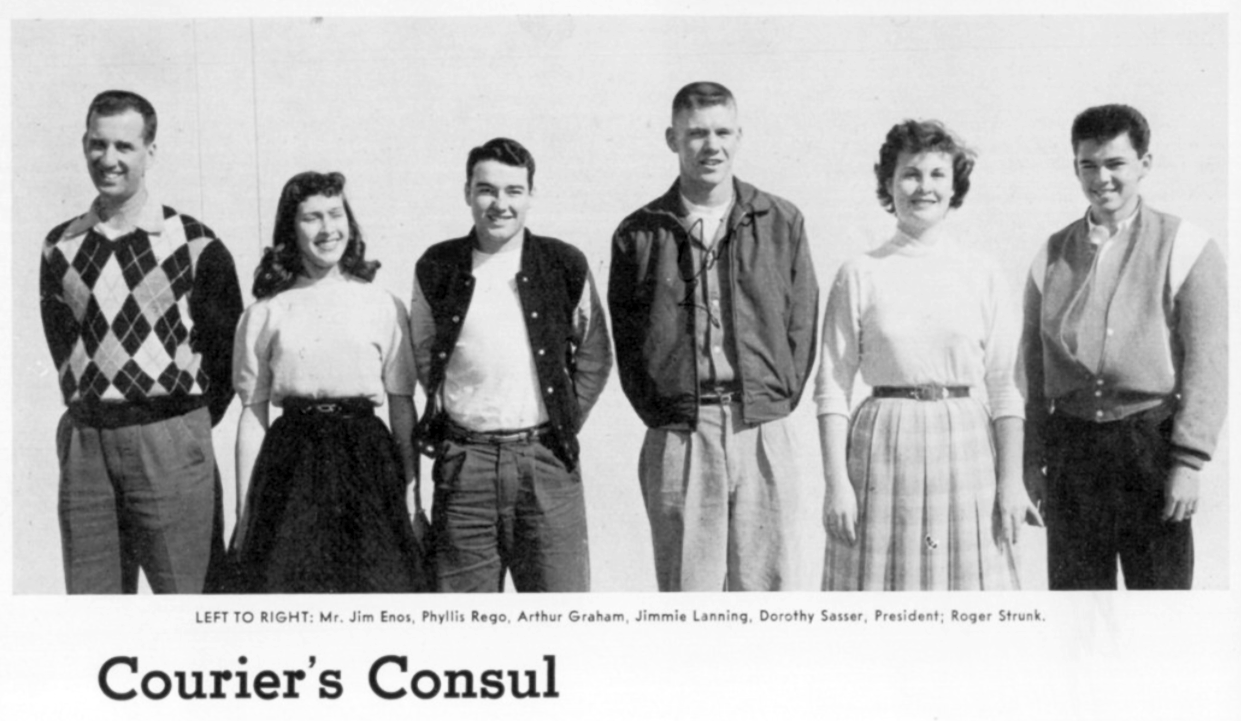
Roger Strunk as a Tracy High junior during the 1955-56 academic year: in the top photo, with his teammates on the varsity baseball team (arms folded, right of center); in the middle photo, wearing #22 as a member of the junior varsity football squad (also right of center); in the bottom photo, as part of the Courier’s Consul (at far right).
This story will be continued…
![]()
Written by David Ferrell Jackson.
“I Dreamed” Cover Art: Concept by David Ferrell Jackson · Photo Illustration by Zahid Amin · Based on 1959 “I’m Rod Lauren” cover art (LSP-2176) courtesy of RCA Victor Records.
Footnotes –
- 1Confusingly, Roger’s “official” entry in the Fresno County birth records for 1939 clearly shows his name on arrival as Rogers Laurence Strunk, and his father as Laurence Jess Strunk, both of which appear to be errors. To add to the confusion, Roger’s name in the 1940 federal census appears to have been reported as Rodgers T. Strunk.





Have A Comment?